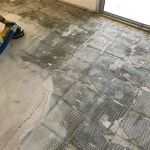The Difference Between Wood Laminate and Vinyl Flooring: A Cost Comparison
Choosing the right flooring for your home can be a daunting task, with numerous materials and styles available. Wood laminate and vinyl flooring are two popular choices, offering distinct advantages and drawbacks. Understanding the differences between them, particularly their cost implications, can greatly inform your decision-making process. This article will delve into the core distinctions between wood laminate and vinyl flooring, examining their cost factors.
Installation Costs
Installation costs can vary significantly depending on the complexity of the project, the size of the area, and the specific installer chosen. Generally, vinyl flooring is considered easier to install than wood laminate. Vinyl flooring often comes in tiles or planks that can be clicked or glued together, making DIY installation a viable option for many homeowners. Wood laminate, on the other hand, typically requires more precise cuts and a more complex installation process, often necessitating professional help. This can lead to higher installation costs for wood laminate.
Materials Cost
The cost of materials for both wood laminate and vinyl flooring varies depending on the quality, brand, and style chosen. High-end wood laminate flooring can be quite expensive, mimicking the appearance and feel of real hardwood with intricate designs and high-quality materials. However, budget-friendly options are also available. Vinyl flooring comes in a wide range of price points, from basic sheet vinyl to luxury vinyl tile (LVT), which offers realistic wood or stone textures. The range of materials available in vinyl flooring allows for both cost-effective and premium choices.
Durability and Maintenance
Durability and maintenance are crucial factors to consider when choosing flooring. Both wood laminate and vinyl flooring are known for their durability and resistance to scratches and dents. However, vinyl flooring is typically more resistant to moisture and water damage than wood laminate. Vinyl flooring is also generally easier to clean and maintain, as spills can be wiped up easily without causing damage. Wood laminate, while durable, can be susceptible to water damage and requires more careful cleaning to avoid scratches and stains.
Aesthetic Considerations
Aesthetically, both wood laminate and vinyl flooring offer a wide range of styles and designs. Wood laminate flooring is designed to imitate the look of real hardwood, offering a classic and sophisticated aesthetic. Vinyl flooring, however, goes beyond just wood imitations, providing a wider range of designs, including realistic stone, tile, and abstract patterns. This versatility in vinyl flooring allows for greater creativity in interior design.
Cost Comparison: Wood Laminate vs. Vinyl Flooring
When comparing the overall cost of wood laminate and vinyl flooring, it is essential to consider the various factors mentioned above. While the initial cost of wood laminate flooring might be higher due to the material and installation costs, the long-term durability and timeless appeal can make it a worthwhile investment. Vinyl flooring, on the other hand, offers a more budget-friendly option with lower initial installation costs and ease of maintenance. Ultimately, the best flooring choice depends on your specific needs, budget, and aesthetic preferences.

Laminate Vs Vinyl Flooring Costs Pros Cons Differences 2025

Vinyl Plank Vs Hardwood A Cost And Feature Comparison The Carpet Guys

Laminate Vs Hardwood Vinyl Flooring 50floor

Is Laminate Flooring Really Er Than Vinyl

Vinyl Vs Laminate Flooring What S The Difference

Vinyl Vs Hardwood Flooring Which One Is Right For You Wide Plank Floor Supply

Vinyl Plank Vs Laminate Flooring Which Is Right For You Onflooring

Laminate Vs Vinyl Flooring Thumbtack Com

Hardwood Vs Vinyl Flooring Pros Cons Comparisons And Costs Fixr

Vinyl Flooring Vs Laminate
See Also







